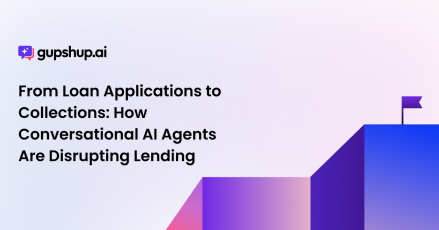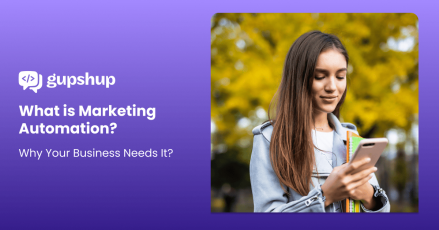Conversational AI vs Generative AI: In-depth Comparative Guide

Introduction
Artificial Intelligence is transforming our lives! And we cannot deny it…
From personalizing customer service to generating creative content, AI technology is evolving at a rapid pace. Among the many forms of AI, Conversational AI and Generative AI stand out for their impact and potential.
Conversational AI enables machines to interact with humans in natural, meaningful conversations. Think of virtual assistants like Siri or chatbots that guide you through customer service. They are designed to understand and respond to human language, making interactions with technology feel more human.
On the other hand, Generative AI models go beyond conversations—they create. Whether it’s producing original text, generating art, or crafting new music, generative AI uses algorithms to design something entirely new from scratch, often pushing the boundaries of creativity and innovation.
But what’s the difference between these two AI superpowers? And how can they be used together to create AI-powered customer support? That’s what we’ll be exploring in this guide. Read more to find out!
TL;DR

Understanding Generative AI

Chatbots have evolved, from simple, reactive responses to proactive, conversationally engaging companions capable of nuanced decision-making. This transformation is largely due to the integration of generative AI into chatbot development. This is why, 80% of customers prefer AI and chatbots for an enhanced experience.
How does it work? Well, it’s a bit like teaching a child to draw. You show them lots of pictures, they study them, and then they start drawing their own. Generative AI models do something similar but on a much larger scale with the help of deep learning. It is fed vast amounts of data, studies its patterns and structures, and then uses that knowledge to generate new, original content in images, texts, software codes, videos, and even audio, indistinguishable from human-generated content.
The most exciting application of these generative AI models is AI-driven chatbots. Suppose you are running a retail company. Generative AI chatbots can train on your extensive datasets to learn and adapt to different conversation styles and topics of your business. Further, they will be equipped to understand your customers’ questions, provide relevant information, and even complete tasks.
But chatbots are just the tip of the iceberg. Generative AI use cases are much more expansive than you think, including:
- Product development: Generative AI models can help create new product ideas and designs based on consumer trends and preferences. They can also help design and prototype products more efficiently, reducing time-to-market and costs.
- Workflow optimization and management: It can help optimize workflows, predict project timelines, and identify potential bottlenecks. With deep learning, Gen AI can look for risks, track progress, and recommend improvements in product data.

- Risk management: Gen AI can identify patterns in data that might indicate fraudulent activity or potential risks. For instance, Gen AI-driven chatbots can analyze customer behavior, transaction data, and external factors in the conversational cloud to detect anomalies that could signal fraud. This can help businesses protect their customers and reduce financial losses.
- Intent detection: These chatbots can drive AI-powered customer support by understanding their intents and purchase history. Based on that, it can answer FAQs, automate tasks, and provide personalized support.
For instance, a cryptocurrency exchange company has successfully implemented a generative AI-powered solution on AWS to deliver accurate sentiment analysis and news narrative categorization for the cryptocurrency market. This innovative approach enables investors to make informed decisions by providing timely and comprehensive market intelligence. Moreover, it supports 25 languages, assuring global users receive localized, multilingual content.
- Generating synthetic data: It can generate realistic synthetic data for training and testing generative AI models, especially when real data is limited or sensitive. This can be particularly useful for tasks like fraud detection, medical image analysis, and natural language processing.
- Lead generation: Gen AI-powered tools can gather and analyze customer data to identify target audiences, personalize marketing messages, and predict customer behavior. This can improve lead conversion rates, customer engagement, and chatbot interaction.
Everything We Know About Conversational AI
If you consider Gen AI the big picture, Conversational AI is the platform that holds all the pieces together. It is the technology that allows your customers to have conversations with machines. These conversations can occur through chatbots, virtual assistants, or voice assistants integrated into various platforms. Through social media, messaging apps like WhatsApp, and even your own website, your customers can have a smooth experience.
Conversational AI platforms form a crucial part of the conversational cloud, a vast interconnected network that brings together various communication channels. At the core of Conversational AI lie two essential components: NLP and machine learning. Natural language processing in AI understands and interprets human language, while machine learning allows AI to learn and improve over time.
There are different types of Conversational AI, including chatbots for online interactions, virtual assistants for personal tasks, and voice assistants for hands-free control. These practical bots are used across various industries for AI-powered customer service, such as:
- Retail and E-commerce: Conversational AI is making online shopping more interactive and convenient. Just like a personal shopper, AI-driven chatbots help your customers discover new products, get personalized recommendations, and even place orders with just a few clicks.
- BFSI and Fintech: In the world of finance, Conversational AI has the ball in its court. AI-driven chatbots act like financial advisors who can handle customers’ queries, help them apply for loans, and even track their account transactions. It is so easy to manage your business when your customers have everything at their fingertips 24/7.
- Healthcare: Healthcare is another area where Conversational AI applications are making a big difference. From answering health-related queries to booking appointments and managing prescriptions, these AI-driven chatbots are becoming essential tools for patients and healthcare providers.
- Travel and Hospitality: Planning a trip? It’s as easy as a breeze when Conversational AI can help your customers find the perfect destination, book flights, and hotels, and even get recommendations for local attractions.
- Education: Learning can be challenging, but Conversational AI can make it more fun and engaging by providing personalized support and adaptive learning. From admission assistance to doubt-solving, AI-driven chatbots enrich student engagement and improve learning outcomes.
- Advertising: Advertising is also getting a boost from Conversational AI applications. Brands can now use chatbots to engage with customers, capture leads, collect information, and even personalize their marketing campaigns to reach their target audience.
- Real Estate: In the real estate industry, Conversational AI automates tasks, improves customer service, and enhances agent efficiency. From property searches and site visits to personalized recommendations, AI-driven chatbots provide a valuable tool for real estate professionals.
What Makes Them Different- A Comparison
The contrast between Gen AI and Conversational AI is how varied an engine can be from a platform. Gen AI is the engine behind many creative and innovative applications, whereas Conversational AI is the platform that enables these applications to interact meaningfully with customers.
Here are the key differences put into a table:

The Intersection of Both Worlds

While both generative AI and Conversational AI are powerful tools, they serve distinct purposes and have different strengths and weaknesses. Gen AI is essentially the engine that powers many AI applications. It’s focused on generating new content, such as text, images, or code, based on patterns it learns from existing data. Its primary goal is to create something original and creative.
According to Statista’s 2024 survey, every 1 in 2 professionals in retail mentioned using gen AI for marketing automation, while merely one-third of them agreed upon virtual agents and chatbots in the United States. However, its abilities fall short in tasks that require understanding and responding to specific user queries or requests.
Conversational AI, on the other hand, is designed to facilitate natural language interactions between humans and machines. It excels at tasks that involve understanding and responding to user input, such as providing customer support, answering questions, and completing tasks.
ACE LLM – The function-specific LLM from house Gupshup!
Foundation LLMs are generalists, capable of handling diverse tasks but lacking deep expertise in any particular field. Function-specific LLMs, however, are honed for specific domains. These specialists excel at delivering accurate, contextually relevant insights and solutions, free from extraneous data. Their focused training allows them to provide clear and effective answers within their area of expertise.
It is worth mentioning ACE LLM as a significant contributor to the field of conversational AI. Gupshup’s ACE LLMs aim to transform and revolutionize customer experiences across every stage of the journey – from discovery to support. This multilingual model delivers fast, personalized interactions, ensuring data security and cost-effectiveness. When integrated with Gupshup’s platform, ACE LLM drives targeted conversations that boost business conversions.
Additionally, it ensures accurate and relevant responses by leveraging its built-in guardrails and its seamless company knowledge base integration. This powerful model also provides enterprise-level controls for accuracy, data governance, and even automated testing and analytics, making it ideal for dynamic user conversations.
With two aspects of automation with endless possibilities, you can now think of a world where an AI-driven chatbot can not only understand your queries but also generate creative responses and personalized recommendations. Here are some potential synergies and applications of combining generative AI and Conversational AI:
- Personalized marketing: Create tailored marketing campaigns based on customer preferences and behavior.
- Content generation: Generate high-quality content, such as blog posts, social media updates, and product descriptions that attract customers.
- Creative problem-solving: Explore new ideas and solutions to complex problems in customer queries, DMs, or payments.
Create a more engaging, personalized, and valuable experience for your customers. If you are wondering where to start, seek help from Gupshup. Our leading Conversational AI platform offers a wide range of tools and APIs for building and deploying sophisticated chatbots.
With Gupshup, you can easily connect your chatbot to generative AI models that can provide informative responses and generate engaging content, such as product descriptions, for your customers. Besides, you can easily deploy omnichannel chatbots across various messaging platforms, ensuring your customers can interact with your brand on their preferred channels.
The Choice is Yours
So, there you have it. Conversational AI and generative AI are like the dynamic duo of the AI world, each with its unique super-features. While Gen AI speaks about the virtuality of chatbot experience, Conversational AI voices a bigger spectrum of Gen AI and consists of much more complex machine learning and LLMs to personalize the user experience.
Together, they’re revolutionizing the way we interact with technology. From AI-driven chatbots that can hold intelligent conversations to maximizing ROI for businesses, these technologies are changing the game.
But let’s not forget that to gain an unparalleled understanding of both, you need to find a reliable partner. Gupshup, the leader in AI innovation, has you covered. So, what are you waiting for? Start your AI adventure with Gupshup today!
FAQs
1. How can generative AI be used to improve product development?
Generative AI can generate new product ideas, design prototypes, and analyze customer feedback to create innovative products that meet market needs.
2. What are some examples of successful Conversational AI applications?
Examples include chatbots, virtual assistants, content generation tools, product design software that provides customer support, AI-powered content creation tools, and personalized product recommendations.
3. How can I stay up-to-date on the latest developments in generative AI?
To stay informed about the latest trends and innovations, you can follow industry news, attend conferences, and partner with technology providers.
4. How can I measure the effectiveness of my Conversational AI initiatives?
You can track key metrics such as customer satisfaction, operational efficiency, and return on investment.





